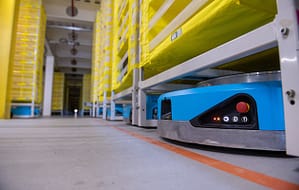Alexander Kernbaum just won’t stop introducing innovations to the robotics field! Several months ago the San Francisco-based inventor created the Abacus motor, the first rotary transmission drive design in over fifty years. Recently he presented yet another interesting design, this time a robot transmission system based on the infinitely variable transmission principle.
Infinitely variable transmission for robot design
This is a special kind of continuously variable transmission. The way it differs from the usual is that the transmission ratio includes a so-called “zero point” that can be approached from a defined “higher” ratio point. This allows conversion of a single electric motor’s turning to an output that’s turning slower, faster or even not turning at all. It’s also possible to make a motor that’s spinning in one direction while the output is spinning in the completely opposite one, without any major system changes.
The idea of a variable-ratio transmission for actuators used in robotics isn’t really new. However, only the most recent engineering breakthroughs allow those traditionally cumbersome components to be used in robotic on a relatively small scale.
This actuator for robots makes them safer and more energy efficient
An actuator based on the principle of infinitely variable transmission has the potential to change the robotics market. The reason for this is simple: efficiency improvement.
With the fixed-ratio transmissions, it’s almost impossible to effectively optimize a drive because of frequently changing speed. Variable transmission actuators for robots are useful here because they have no fixed ratio, guaranteeing that the system will always operate effectively.
This invention can improve the effectiveness of transmission in robotics by more than 50%, optimizing the drives to the needs of the particular system.
In the future, we’re likely to see this technology being used in various mobile platforms (thanks to the enhanced battery life, which has always been an issue for them) and all robotic platforms that have something to do with human interactions (as this actuator can make them so much safer to use).
As an added bonus, this technology can also make actuators in robotics more affordable.
Conclusion
Only time will tell how this new Inception Drive is going to be used and whether the benefits are going to be as numerous as it seems. However, right now the invention looks very promising, to say the least. We are very much looking forward to seeing how it catches on.






Leave a Comment